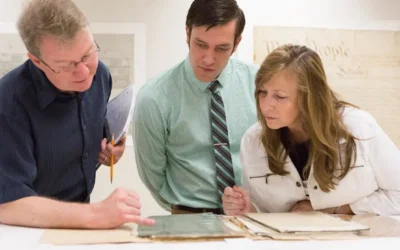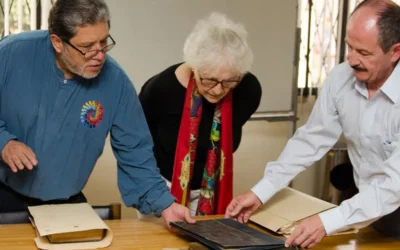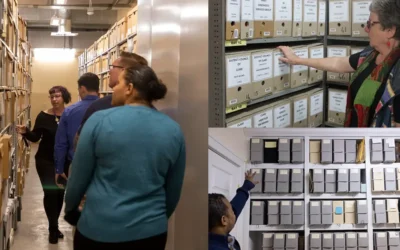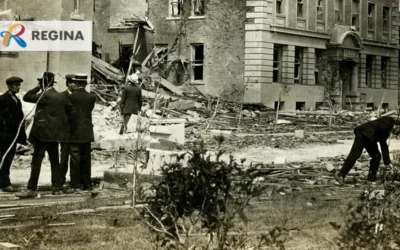Building Support for Archival Programs
Margot Note
Founding an archives program takes knowledge and skill. To be successful, archivists also need to wield their political savvy and institutional advocacy. Building support for archival management requires buy-in from executives and employees.
Creating Buy-in
The first step in establishing an archives program is identifying internal stakeholders who will benefit from the archives, such as people in leadership, board members, and staff members, and external stakeholders like researchers and students. Archivists should also enlist record creators who create, support, and document institutional activities. For many employees, preserving history is not an immediate need. Employees may be overwhelmed with their activities without much foresight and decision-making about how to protect their work in the future.
Institutions create their legacy by connecting with mission statements, publications, and websites. Ideally, that history should be recorded in written or oral records, not just reside in the institutional memory embodied in long-term employees. Even the youngest organization has a history: the vision of the founders and the reasons behind programs and projects that can help define an archival collection and set policies for retaining materials. The history should include a chronology of the company and factor in significant changes in management and mission.
Archivists should articulate how an archives program relates to the organization’s vision and how the archives will support day-to-day operations. Archiving should not be seen as an activity to do someday but as an endeavor directly tied to organizational benefits, culture, and history.
Forming a Steering Committee
Archivists should enlist executives and interested board members in a steering committee to help draft a mission statement for the archives program. The archives’ mission should tie into the organization’s vision with a clear purpose. Guiding resources to future archival activities will be easier to achieve with leaders having personal buy-in to its success and engaging in the archival program initiation.
After the steering committee discusses and drafts an archives mission statement, stakeholders should contribute to the project’s design since the archives should reflect the institution’s activities. Communicating how an archives project will serve each stakeholder’s interest is critical. For example, board members may be interested in the organization’s long-term impact. Directors may be more concerned with the legacy of the work and the people who created it. Managers may be most interested in how an archives project will help increase labor and economic efficiency. The marketing department is concerned with stories they can share with the community. The facilities manager may want to clear spaces and open more room for other activities.
360° Engagement
Top-down success strategies may include reporting archival activity directly to an executive director, attending board meetings, and forming a board committee, which help guarantee that the archival program remains aligned with organizational goals. Consider the archives’ annual operating and project budgets. No matter the scale of the archives, it is easier to attract outside funding and support when the archives are incorporated into institutional planning. A conservative budget line item for a sustainable archives program is a better measure of long-term viability than a capital project for the archives that loses momentum after its establishment.
Archivists may need to employ bottom-up strategies to build support among the stakeholders who carry out day-to-day work. For example, the archives can serve marketing and development staff by offering access to historical information, records, and artifacts that support narratives. Vital institutional archives provide research services for users within the organization, making materials available easily. Staff members should be shown how contributing to the archives can save time, streamline workflows, document work processes, and preserve the historical record.
No matter the archival program’s shape, archivists should enlist all possible stakeholders’ input at its inception to build a foundation for long-term success.
Margot Note
Margot Note, archivist, consultant, and Lucidea Press author is a regular blogger, and popular webinar presenter for Lucidea, provider of ArchivEra, archival collections management software for today’s challenges and tomorrow’s opportunities. Read more of Margot’s posts here.
Never miss another post. Subscribe today!
Similar Posts
Enhancing Collaboration; Methods for Archivists
Archivists can enhance collaboration through user-centric approaches and efficient processing methods based on customer service principles.
Navigating Selection in Archival Practice
The archival selection process is far from straightforward, given the limitations of long-term preservation and ongoing accessibility challenges.
Responsible Stewardship in Archival Practice
Responsible stewardship is a philosophy that guides the actions and decisions of archivists in safeguarding collective memory.
A Modern View of a City’s History via ArchivEra
Brief success story on City of Regina Archives’ use of ArchivEra to manage collections of legal, historical, administrative or financial significance
Hosting service
Enjoy all of the benefits of your Lucidea solution with secure, reliable, stress free hosting
Programs & incentives
No matter your size or budget, we’ve got you covered, today and tomorrow




Leave a Comment
Comments are reviewed and must adhere to our comments policy.
0 Comments